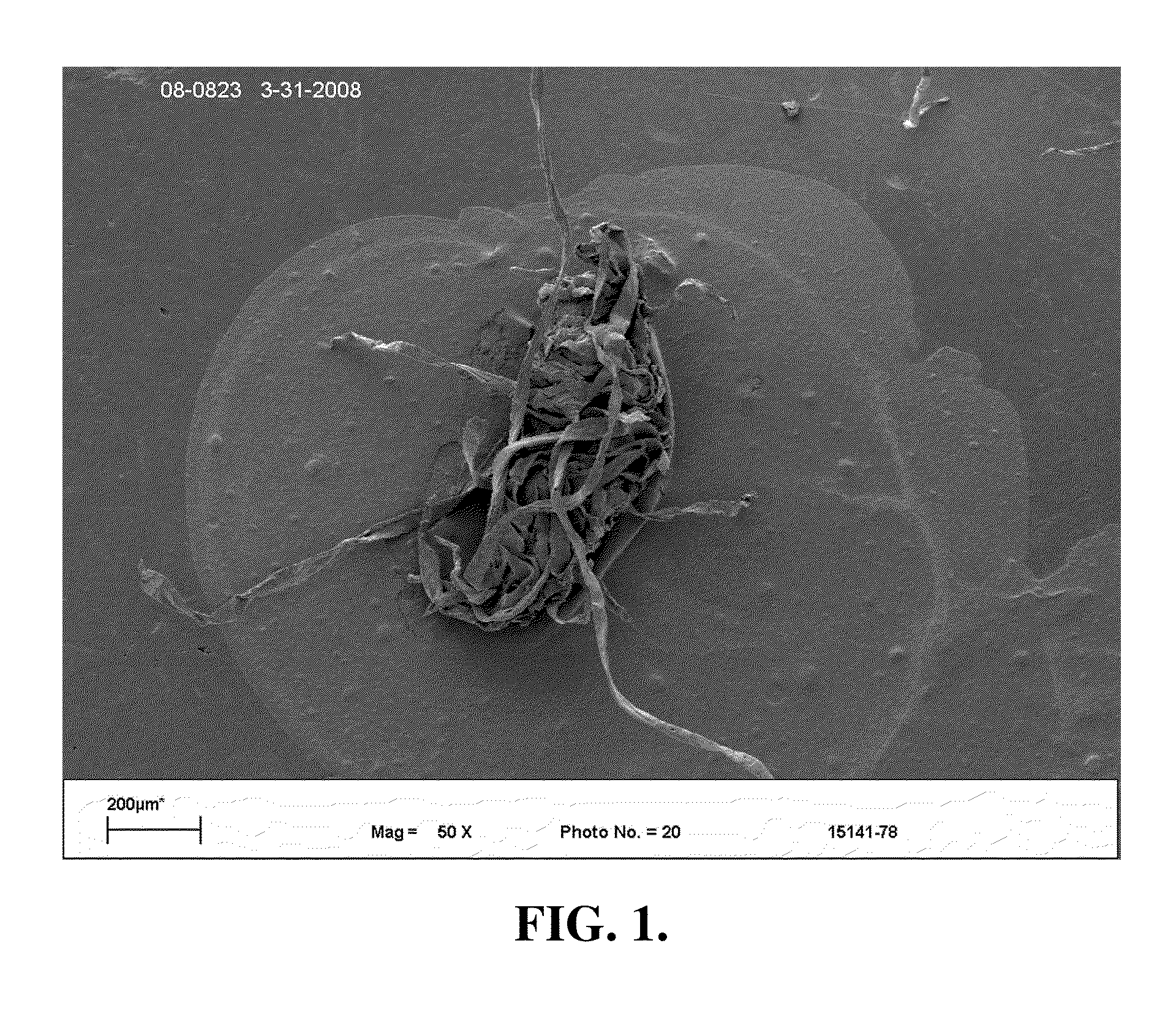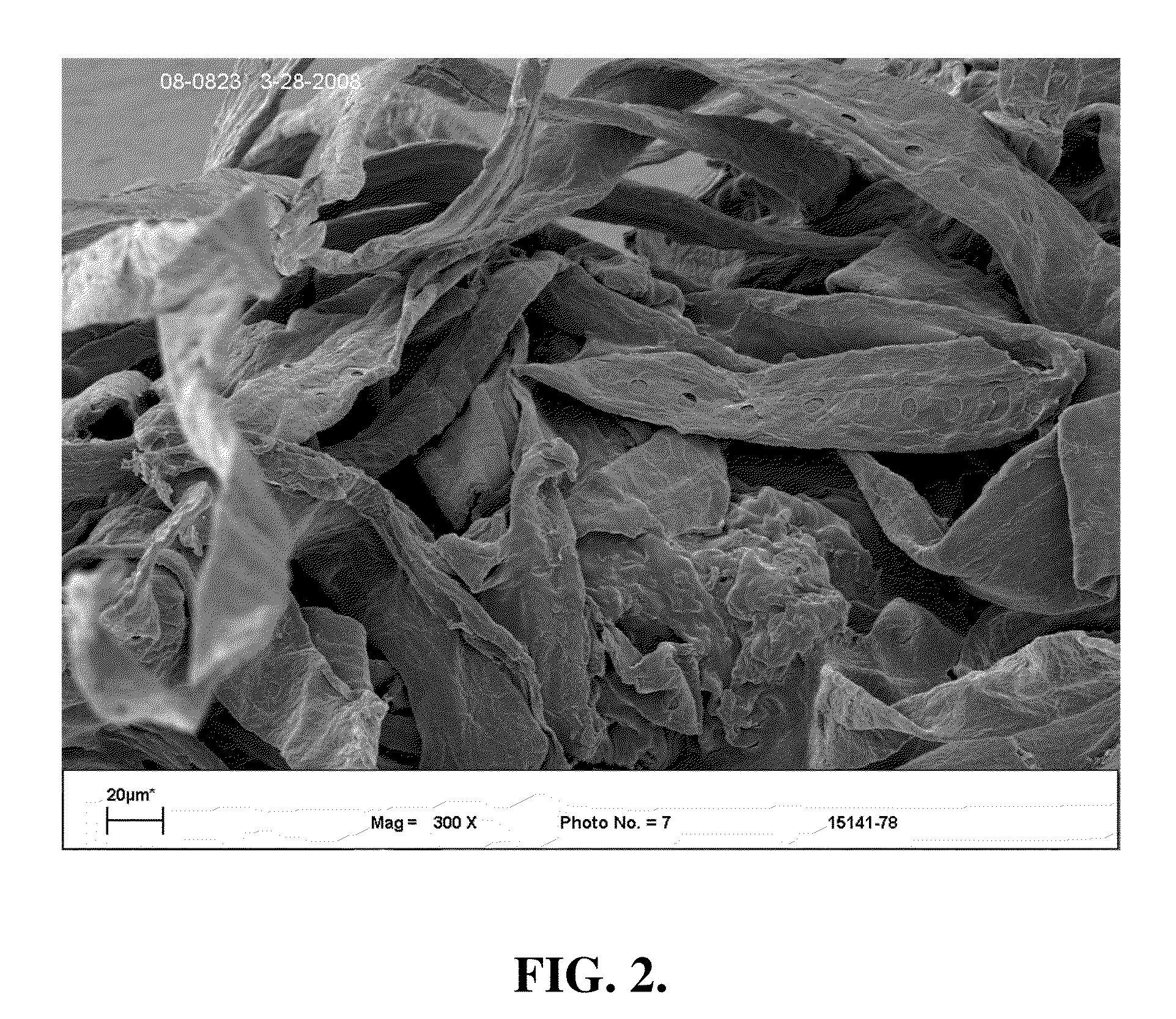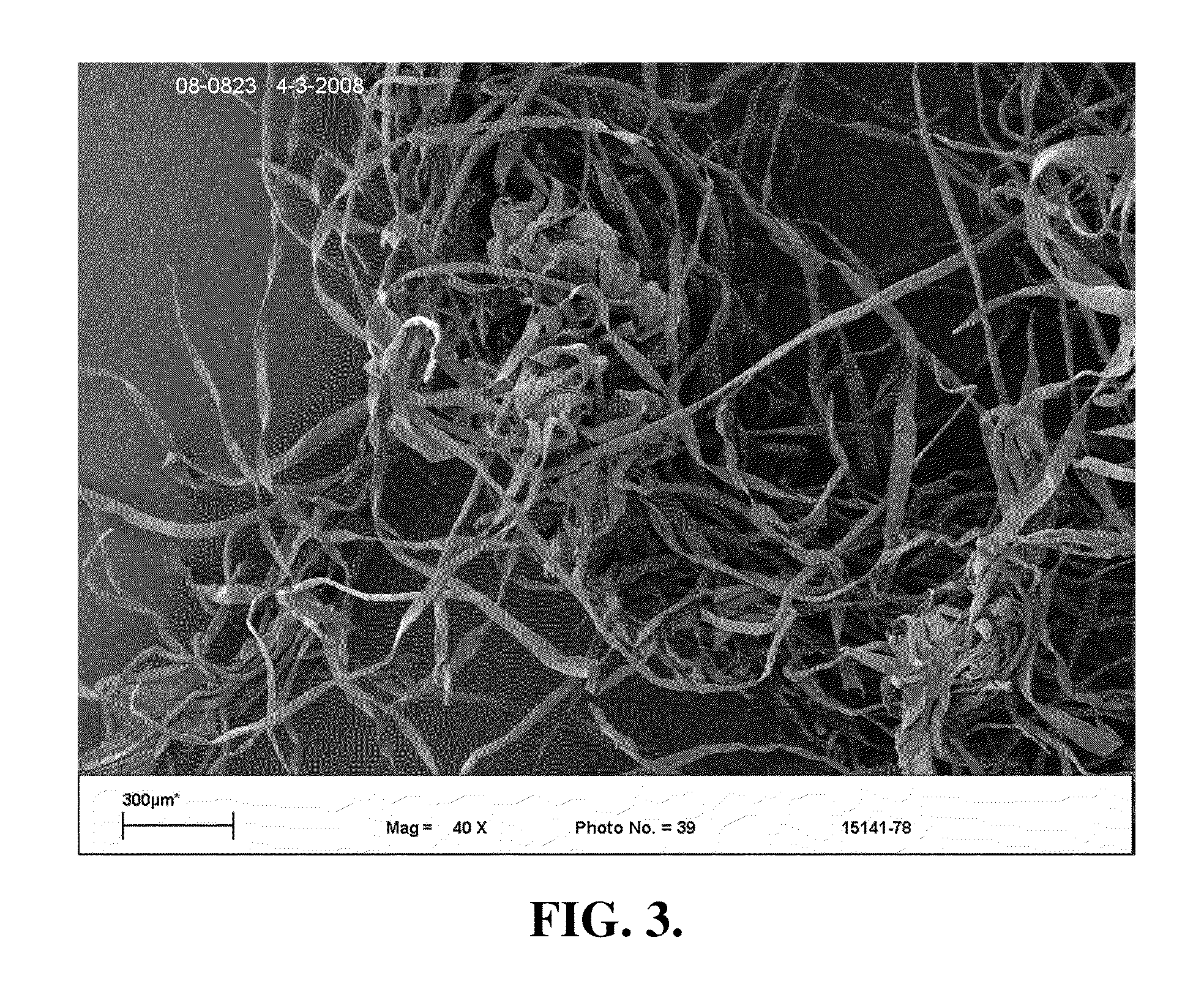Fibers having biodegradable superabsorbent particles attached thereto
a superabsorbent and fiber technology, applied in physical/chemical process catalysts, metal/metal-oxide/metal-hydroxide catalysts, other chemical processes, etc., can solve the problems of high cost, inefficiency in sap use, and large amount of interstitial liquid in the produ
- Summary
- Abstract
- Description
- Claims
- Application Information
AI Technical Summary
Problems solved by technology
Method used
Image
Examples
example 1
The Preparation of Representative Superabsorbent Fibers Having Particles Attached Thereto: Aluminum Sulfate Crosslinking
[0081]In this example, the preparation of representative superabsorbent fibers having particles attached thereto is described. See Sample 1, Tables 1 and 2.
[0082]Superabsorbent particles. Corn starch (Clinton 185®, Archer Daniel Midland, Ill.) (2.4 g) was cooked for 45 minutes at 75° C. in 51 mL deionized water. The cooked starch was then added to 899 mL deionized water in a Hobart mixer. Then, carboxymethyl cellulose (40 g OD northern pine wood pulp CMC, DS 1.07, 1% aqueous solution, Brookfield viscosity 725 cps, spindle #3 and speed 20 rpm) was added with mixing. The aqueous polymer mixture was mixed for 60 minutes.
[0083]To the aqueous polymer mixture was added 0.6 g aluminum sulfate octadecahydrate (Sigma Aldrich, Wis.) in 50 mL deionized water. The polymer mixture was then mixed for 30 minutes to provide a crosslinked polymer gel.
[0084]The crosslinked polymer g...
example 2
The Preparation of Representative Superabsorbent Fibers Having Particles Attached Thereto: Aluminum Sulfate Crosslinking
[0086]In this example, the preparation of representative superabsorbent fibers having particles attached thereto is described. See Sample 2, Tables 1 and 2.
[0087]Superabsorbent particles. Corn starch (Clinton 185®, Archer Daniel Midland, Ill.) (2.4 g) was cooked for 45 minutes at 75° C. in 54 mL deionized water. The cooked starch was then added to 896 mL deionized water in a Hobart mixer. Then, carboxymethyl cellulose (40 g OD northern pine wood pulp CMC, DS 1.03, 1% aqueous solution, Brookfield viscosity 1465 cps, spindle #3 and speed 20 rpm) was added with mixing. The aqueous polymer mixture was mixed for 60 minutes.
[0088]To the aqueous polymer mixture was added 1.0 g aluminum sulfate octadecahydrate (Sigma Aldrich, Wis.) in 50 mL deionized water. The polymer mixture was then mixed for 30 minutes to provide a crosslinked polymer gel.
[0089]The crosslinked polymer ...
example 3
The Preparation of Representative Superabsorbent Fibers Having Particles Attached Thereto: Aluminum Sulfate Crosslinking
[0091]In this example, the preparation of representative superabsorbent fibers having particles attached thereto is described. See Sample 3, Tables 1 and 2.
[0092]Superabsorbent particles. Corn starch (Clinton 185®, Archer Daniel Midland, Ill.) (2.4 g) was cooked for 45 minutes at 75° C. in 47 mL deionized water. The cooked starch was then added to 903 mL deionized water in a Hobart mixer. Then, carboxymethyl cellulose (40 g OD northern pine wood pulp CMC, DS 1.03, 1% aqueous solution, Brookfield viscosity 1465 cps, spindle #3 and speed 20 rpm) was added with mixing. The aqueous polymer mixture was mixed for 60 minutes.
[0093]To the aqueous polymer mixture was added 0.8 g aluminum sulfate octadecahydrate (Sigma Aldrich, Wis.) in 50 mL deionized water. The polymer mixture was then mixed for 30 minutes to provide a crosslinked polymer gel.
[0094]The crosslinked polymer ...
PUM
 Login to view more
Login to view more Abstract
Description
Claims
Application Information
 Login to view more
Login to view more - R&D Engineer
- R&D Manager
- IP Professional
- Industry Leading Data Capabilities
- Powerful AI technology
- Patent DNA Extraction
Browse by: Latest US Patents, China's latest patents, Technical Efficacy Thesaurus, Application Domain, Technology Topic.
© 2024 PatSnap. All rights reserved.Legal|Privacy policy|Modern Slavery Act Transparency Statement|Sitemap



